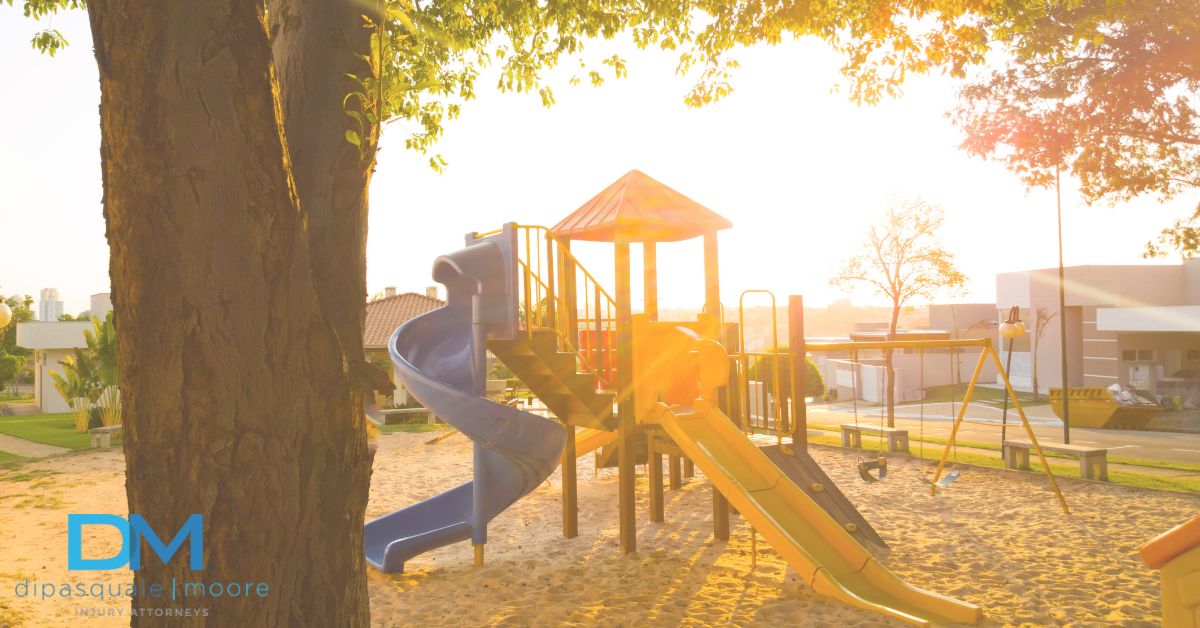The school year is right around the corner, which means your kids will spend around six or more hours away from home. Although schools follow proper health and safety precautions, accidents still happen. Below you can find some of the most common back-to-school injuries, including ways a person can prevent them.
Common Injuries
Broken Bones
According to the
Centers for Disease Control and Prevention (CDC), around 45 percent of playground-related accidents were severe fractures, internal injuries, concussions, and dislocations. Fractures to the arms and legs are usually common in slip and fall accidents. While accidents can be caused as a result of a child “just being a kid,” they can sometimes result from a poorly maintained playground. If that is the case, you may be able to file a premises liability claim.
Severe Bruises and Cuts
Cuts and bruises happen both on the playground and in the classroom. Go over these tips with your child to avoid injuries while under the care of their teacher:
- Use scissors for their intended use only (holding them properly).
- Be cautious playing on hard surfaces like concrete or tile.
- Do not jump off of playground equipment.
- Tell a teacher or guardian about an injury immediately so they can treat the wound properly.
Dislocations
While this type of injury is not the most common amongst children, the possibility of dislocation on the playground or in a recreational sport is still a possibility. In the event of a dislocated knee or shoulder, it is crucial to treat it immediately. Do not handle the injury alone, and visit the ER or an urgent care clinic to have a healthcare professional put the affected joint back in its proper position.
Your child may have to undergo physical therapy after a dislocation to strengthen the muscles around the joint.
Head Injuries
A head injury is one of the more severe injuries a child can endure. These types of injuries tend to have long-lasting effects, potentially leading to permanent brain damage. If your child exhibits the following signs after returning home from school with a head injury, it is best to take them to a hospital immediately:
- Slurred speech
- Dilated pupils
- Loss of memory and coordination
- Nausea or vomiting
- Headache
- Fatigue
- Weakness in the fingers and toes
A doctor will use the Glasgow Coma Scale (GCS), speech, and imaging tests to determine the severity of a patient’s traumatic brain injury. Visit our
blog to learn more about how doctors diagnose TBIs.
Common Accidents
Playground Accidents
Another statistic from the
CDC found that around 200,000 children under the age of 15 make a trip to the emergency room for a playground-related injury each year. Most of these injuries took place on some form of climbing equipment, and children ages 5-9 were more likely to visit the ER.
To reduce the risk of a playground accident, ensure your child does not wear loose clothing that can get caught on equipment. Also, be sure to look at the playground at your child’s school to ensure the equipment is age appropriate. If you feel like a piece of equipment is not safe for your child, speak to their teacher about what you are comfortable with. It does not hurt to have a conversation with your child about the dangers of some equipment. While you want your child to have a good time on the playground, sometimes it’s better to be safe than sorry.
Bus Stop and Crosswalk Accidents
Many bus stop accidents happen when drivers fail to abide by a school bus’s stop sign. To avoid a tragic accident this school year, ensure your child never walks behind the bus and stays around 10-15 feet away from its sides. When exiting the bus, tell your child to walk in front of the bus so the driver can see where they are.
With more students commuting by foot to their schools, pedestrian accidents are also bound to happen. If your child is under 11, we recommend walking with them to guarantee they arrive at school safely. If you cannot do so, try to find a walking buddy for them, whether it is a trustworthy neighbor, another relative, or a group of students led by a chaperone.
Auto Accidents
With students heading back to school, it is a no-brainer that traffic congestion will increase. The
National Safety Council (NSC) found that car accidents tend to peak between August and October.
Additional factors can lead to accidents during this time of year, including the rise of construction sites, more inexperienced teen drivers on the road, and an increase in road ragers.
Hot weather tends to make drivers irritable, which can lead to those making irrational decisions on the road. If you find yourself behind a driver who is honking their horn or making threatening gestures, the best thing to do is to give them plenty of space and avoid eye contact. If you run into a road rager in a school zone, pull over and let them pass.
Even when parents take steps to mitigate the risk of school-related injuries, accidents still happen. In that case, it’s crucial to be prepared for anything. At DiPasquale Moore, we have an extensive history of handling some of the most complex personal injury claims, including pedestrian, premises, and car accidents.
Kansas and Missouri Personal Injury Attorneys
Please contact our
personal injury attorneys today if you need our legal services. We have
multiple locations throughout Missouri and Kansas, with offices in Kansas City, St. Louis, Columbia, and Topeka. To reach our offices, call us at (816) 888-7500 or visit our
website to get started on a free, no-risk consultation.

